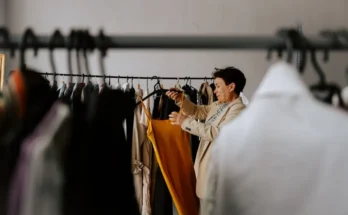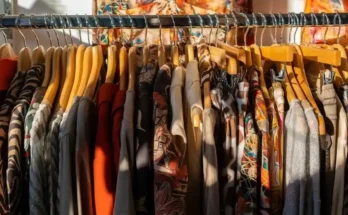1. Chenille Fabric
Chenille is a fibre that can be used as yarn, making it a soft and flexible material. The threads that make the chenille are carefully stacked to create the final product that has an appearance of a caterpillar with a furry exterior. Because chenille is a knit fabric, it is weaved with a variety of different fibres like silk, rayon, cotton and cotton.
2. Chiffon Fabric
It’s a thin fabric with a small degree of shine. Chiffon is a plain weave and is characterised by small puckers that are created through z and s twists that make the yarn rough to the touch. Chiffon yarns also twist far more than normal yarns and are then woven with plain weave. Plain weave can be described as a process where single weft threads can be laid over single threads of the warp. This fabric is woven using synthetic or natural fabrics like polyester, nylon, silk and rayon.
3. Cotton Fabric
Cotton comes from the natural fibres found in cotton plants. It is regarded to be a staple fibre. This means it is made up of varying dimensions of fibre. The main ingredient in cotton is cellulose. This is an insoluble plant substance that has soft and fluffy qualities. The fibres of cotton are spun to create yarn, which is then woven into fabrics that are soft and durable. The products made from cotton fabric are utilised in clothing like t-shirts and household items such as sheets for beds. The most widely used fabric throughout the globe. Therefore, it is most sought-after by manufacturers of cotton fabrics and exporters.
4. Damask Fabric
It is a kind of fabric where the pattern is weaved into the fabric instead of being applied to it. The pattern is created through the combination of two weaving techniques. The background is created using plain sateen weave, or twill. The design may be one or more colours and is created on the background fabric using an elegant satin weave. Damask is made of various types of fabrics like wool, linen silk, silk, and rayon.
5. Gingham Fabric
Gingham is cotton or in some cases, a blended cotton fabric that is made from dyed yarn that is then made into the plain weave. This produces checked patterns that can be created in a variety of sizes. Gingham is usually offered in two colour designs. The most well-known combinations are red-white gingham as well as blue-white gingham. The patterns of this fabric can be reversed and appear the same on both sides. Cost-effective and easy production make gingham a highly sought-after fabric that is widely used in dresses, shirts and tablecloths.
6. Jersey Fabric
Jersey is an elastic, soft fabric initially made from wool. At present, it’s composed of wool, cotton blends along synthetic fibres. On the right, jersey fabric has a smooth surface and the other side is packed with loops. Jersey fabric is a lightweight to medium-weight product that is great for clothing like bedsheets and sweatshirts.
7. Lace
Lace is a fine fibre originally made of linen and silk however today, synthetic fibres and cotton thread are also widely used. It is distinguished by its open-wave patterns that are made in a variety of ways. It is used most often as a decorative fabric that can enhance the appearance of clothes and decor for the home. It is considered to be a luxurious fabric because it requires a lot of patience and time to create. The lace fabric can be found in various types like extravagant lace GPO lacing, embossed jacquard lace border narrow fabric lace and so on.
8. Leather Fabric
Leather is a type of animal-based fabric that is made from skin. Different kinds that are made of animals’ skins need different treatment. Cowhide is among the most frequently utilised leather, making up 6percent of the leather market. Today, virtually every animal can be turned into leather, including the crocodile and pig, or even the stingray. Leather is durable and wrinkle-resistant material that can be altered to a variety of different styles based on the type of animal or grade and the treatment.
9. Merino Wool Fabric
This is a form of wool that originates from the fur coat of the merino sheep. Contrary to normal wool, which causes itching, merino wool is widely recognized as the softest type of wool. It doesn’t scratch the skin. The merino fibre is a luxurious material and is extensively used in clothing for outdoor and socks clothing.it is well-known for its ability to wick moisture away, is sweat-proof, and odour-resistant.
10. Modal Fabric
Modal is an artificial material made from the wood of the beech tree. A modal is an alternative form of rayon that is more resilient and flexible. Additionally, it’s often mixed with other fibres, like spandex and cotton to increase its toughness and durability. Modal is often used to make clothes like underwear and pyjamas as well as things that are used in the home like sheets and towels. Modal is among the several fabric names that are popular and available quickly in the marketplace.
11. Muslin Fabric
Muslin is an unwoven cotton fabric that is produced using the plain weave technique. Muslin textile is utilised for fashion industries, where it is utilised to test patterns before sewing and cutting. Muslin is light and gauzy and is an ideal material for testing patterns. This is why it’s used to mimic drape, and it is also simple to sew. This makes muslin a great option for fashion designers when testing patterns.
12. Polyester Fabric
It is an artificial fibre made from petrochemicals like petroleum and coal. Polyester is thought to be an extremely durable material, but it is not breathable. This is why it’s not the best choice for clothing, but it is employed as a soft and cushioning material for pillows and comforters as well as padding for upholstery. Other polyester blends are durable due to the durability that the fabric has is combined with the ability to breathe of other fabrics, creating the perfect fabrics.
13. Spandex Fabric
Spandex is an artificial fibre that is often referred to as Lycra. It is a fabric that is well-known for its incredible elasticity. Spandex is usually combined with other fibres of various types to provide an elastic feel. It is often used in athleisure clothing, jeans, and hosiery. It is composed of a long chain of polymers known as polyurethane. Polymers are transformed into fibre through the drying spinning process.
14. Suede Fabric
Suede is a form of leather constructed from the underside of animal skin, that gives it a smooth surface. The most commonly used skin for making suede is lamb, but deer, calf, pig as well as goats are also used. It is softer than traditional leather and, in general, less sturdy also. But it is also resilient and flexible and can be moulded and constructed effortlessly. It is often used to create jackets and shoes and accessories like bags and belts.
15. Tweed Fabric
Tweed is made of rough wool fabric. It can be weaved using a plain weave or the twill weave. Tweed is thought to be strong and rigid and is a warm fibre. Wool tweed is weaved with threads in a variety of shades to create different patterns that are typically geometrical. Tweed is a popular fabric used for jackets and suits and was initially made to carry out hunting activities.
16. Twill Fabric
Twill is a weaving technique and is among the three weaving techniques that are used in the world of textiles, aside from the plain weave as well as a satin weave. The feature that differentiates it from all other weaving techniques is the diagonally ribbed pattern that is on it. The front side of the weave is typically darker than the reverse and has a higher thread count. This means the fabric is transparent and dense, which makes it extremely durable.
List of Fabric Names for Textile
- Crepe fabric
- dyed fabrics
- Lining fabrics
- Fabrics for furnishing
- tricot fabrics
- Tarpaulin fabrics
- Acrylic fabric
- Blended Fabric
- cambric fabric
- Organdy fabric
- Fur fabric
- duck fabric
- heat-resistant fabric
- hemp fabric
- Lace fabric
- Fabric made of muslin
- Oxford fabric
- pique fabric
- ramie fabric
- raschel fabric
- Ripstop fabric
- spun bond fabric
- spun lace nonwoven fabric
- suede fabric
- tapestry fabric
- Tencel fabric
- Terry fabric
- thermal fabric
- Tweed fabric
- ultrasonic non-woven fabric
- velveteen fabric
- Vinyl fabric
- voile fabric
- waterproof fabric
- Aerosol-resistant fabric
- worsted material
- tissue fabric
- flock fabric
- Microfiber Fabric
- greige fabrics
- Italian fabric
- Nighty fabric
What can you do to choose the best fabric from the various kinds of fabric that are suitable for the best application?
The fabric market is expanding, and increasing every day. Fabric exporters and fabric manufacturers make a wide variety of fabrics for consumers of textiles. Thanks to recent advancements in technology new fabrics are popping to market and setting new trends in fashion. But, it’s important to keep up with the fashion industry and keep up-to-date with the requirements of customers. With the wide variety of textiles and the latest techniques for making them, it’s crucial to be aware of evolving trends and be innovative to keep up. Only this way will the industry of textiles be successful and grow in the marketplace. This is an inventory of the various types of fabrics that are available. But there are varieties of different kinds of fabrics that are readily available.




